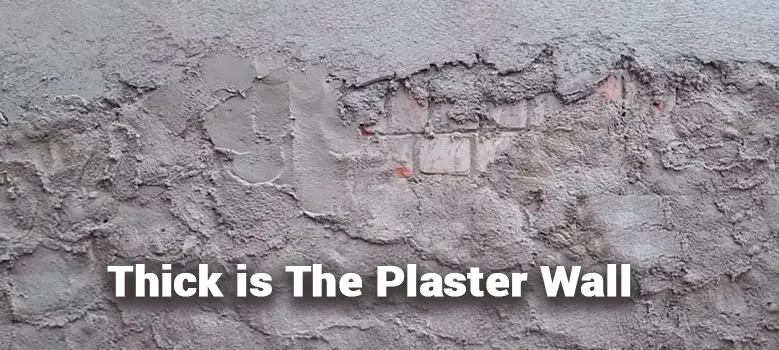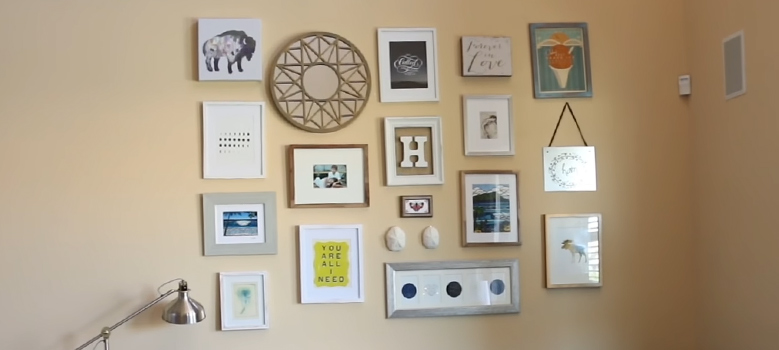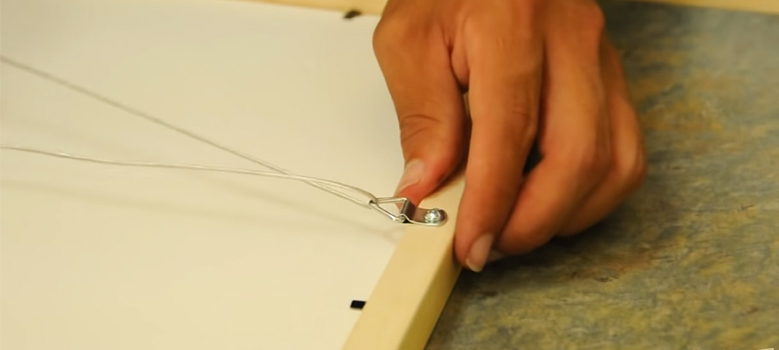This article teaches how to calculate the plastering thickness for brick, concrete, roof, ceiling, and external wall. The purpose of plastering is to protect brick walls from the environment. It is also to smooth out their surfaces, give them a nice finish, make them look good, and increase their strength.
What Is The Thickness of The Plaster Wall?
Plastering brick walls enhances their strength and damp-proof properties and prevents water seepage in the outer part. An irregular and coarsely textured brick wall can be strengthened and durable by plastering cement mortar. First, Coating begins with the smooth surface and face plane. Then, you can paint it to look great and create an even smooth surface.
There Are Four Types of Plastering Based on the Kind of Wall:
1) External wall plastering, 2) Internal wall plastering, 3) Concrete wall plastering & 4) Roof for ceiling plastering.
(1) External Wall: External wall plastering is the process of plastering the outer or rough face of brick or concrete walls.
(2) Internal Wall: An internal wall plastering consists of plastering the inner face or plane surface of brickwork and concrete walls.
(3) Concrete Wall: Concrete wall plastering involves plastering concrete structures like columns and beams.
(4) Roof or Ceiling: The process of plastering the bottom face of a roof or ceiling.
External Wall Plastering Thickness
The thickness of external plastering should range from 15mm to 25mm. For external plastering, 15mm is a single coat, 18mm is a double coat, 20mm is a triple coat, and 25mm is a double coat. For example, plastering with a thickness of 18 mm should be coated with 12 mm in the first coat and 6 mm in the second coat (12 mm plus 6 mm).
The first coat of 20 mm thick external plastering should have a thickness of 12mm, and the second coat should have a thickness of 8mm (12mm + 8mm). Therefore, providing 15 mm consistency as the first coat of external plastering and 10 mm thickness as the second coat (15 mm and 10 mm) is recommended in 25 mm thick external plastering.
Internal Wall
The interior brick wall is the wall’s surface and needs to be smoother and more decorative. Plastering thickness for internal walls is 10mm, 12mm, and 15mm.
Concrete wall
Load-bearing structures such as beams and columns make up masonry walls. In civil engineering, maximum concrete wall plaster thicknesses are 6 mm, 10 mm, and 12 mm.
Roof or Ceiling
The bottom of the roof slab, known as a concrete ceiling, should receive only one coat of plaster material of 6mm thickness to ensure smoothness.
What Is the Correct Thickness of Wall Plaster?
Concrete or Masonry
As a first step, the substrate should be within 1/4-inch tolerance every 10 feet. Overcoming this tolerance will force the plastering contractor to apply plaster to a thickness that may violate the building code. Before using cement plaster, wall and ceiling contractors should be aware of this and provide letters to protect themselves. Generally, the maximum thickness of cement plaster over concrete or masonry is 1.5 inches. The entire wall thickness is 5/8-inch, and the ceiling thickness is 1/8-inch without lath. Using lath may lead to a thicker plaster application.
Framed Construction
The minimum thickness is 3/4 inch. A cement plaster thickness of 7/8 inch is required for most fire-rated assemblies, while some require a thickness of 1 inch. Refer to the fire-rated assembly test. The thickness can be as thin as 3/8″. The material must be a proprietary product and Install it according to the manufacturer’s code evaluation report.
Intended Thickness
Several experts have measured the plaster thickness and have concluded that it is not code-compliant. Plaster on framed walls with building paper is particularly susceptible to this problem. When wet, the building paper will wrinkle.
Plaster backs up as a result of shallow waves. Undulations in the cement plaster make it impossible to have a uniform thickness, so the membrane has a variable thickness. By measuring the ground’s thickness, you can determine its thickness. Plasterers attempt to achieve this “intended” thickness of the material. However, he cannot control the wall’s undulations, imperfections, or wrinkles in the paper.
What Thickness Should I Plaster My Walls?
Plastering brick walls typically come in three thicknesses: 12 mm, 15 mm, or 20 mm. 12 mm thick cement plaster is used for plastering the plain face of brick masonry. There is a requirement for 15 mm cement plaster on the rough side of brick walls 13.5″, 9″, and 4.5″. It is sometimes necessary to apply cement plaster on rough brick walls in two coats.
When making ‘Dado’ with cement concrete flooring, 18 mm thick cement plaster with neat cement slurry is needed. A minimum thickness of 6 mm and a maximum thickness of 10 mm are recommended for plastering RCC surfaces. A minimum thickness of 6 mm thick cement plaster should be applied to those areas where necessary. 10 mm thick cement plaster is done underside of the RCC ceiling/ roof
Frequently Asked Questions
How thick is plaster usually?
Depending on the type of plastering, plaster thickness ranges from 6mm to 25mm. The plaster thickness recommended for external walls is 15mm for single coats, 18mm (10+8), 20mm (12+8), and 25mm (15+10) for double coats.
How thick is plaster over a brick wall?
A large portion of the plaster has separated from the brick, leaving bubbles away from the wall. Horsehair rough plaster is applied over a skim coat of cement plaster between 1/2 inch and 3/4 inch thick. Behind the wall, bricks have deteriorated into dust in some places.
Conclusion
It is best to use cement plaster in the construction of buildings in the thickness of 6 mm (for ceilings and concrete plastering), 12 mm (for internal walls and brickwork plane surfaces), and 15 mm or 20 mm (for external walls and rough brickwork surfaces).
Plastering concrete and ceilings with cement plaster six millimeters thick is common. Likewise, it is common to plaster brick walls and wall plasters with a 12 mm thick cement plaster on the surface. For plastering brick walls and rough surfaces of external walls, use 15 mm or 20 mm thick cement plaster.





